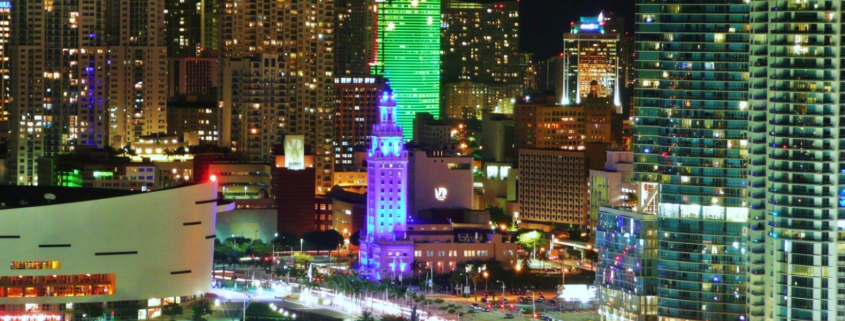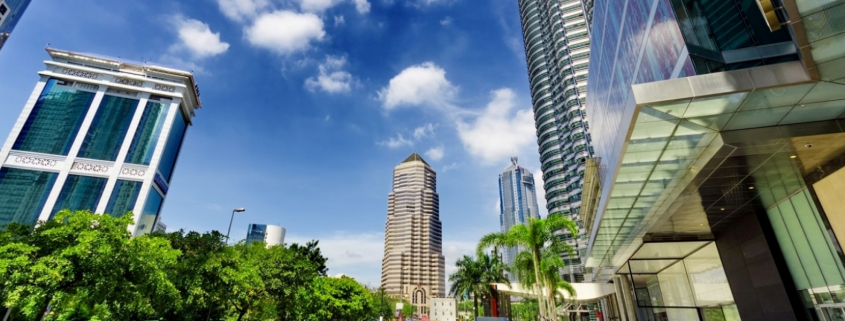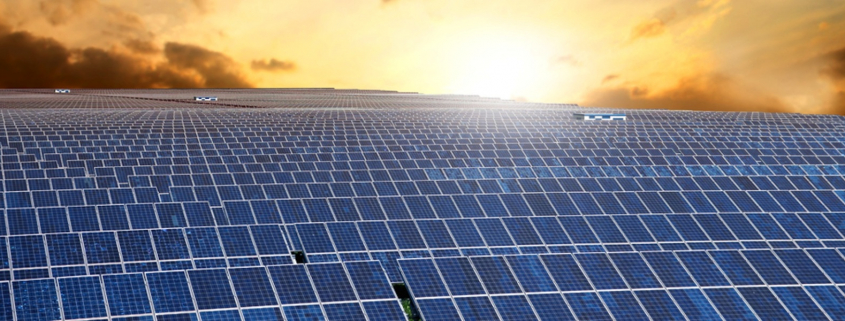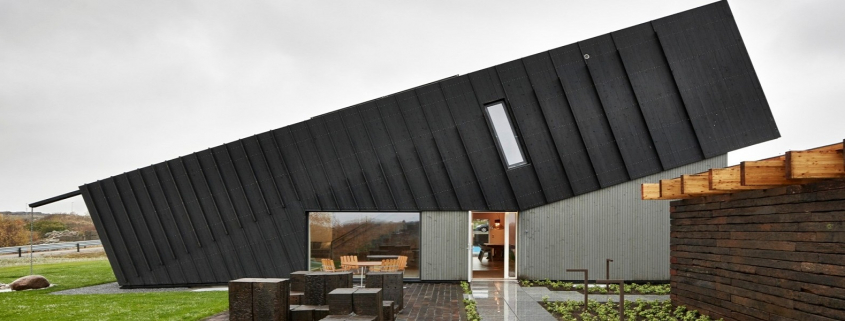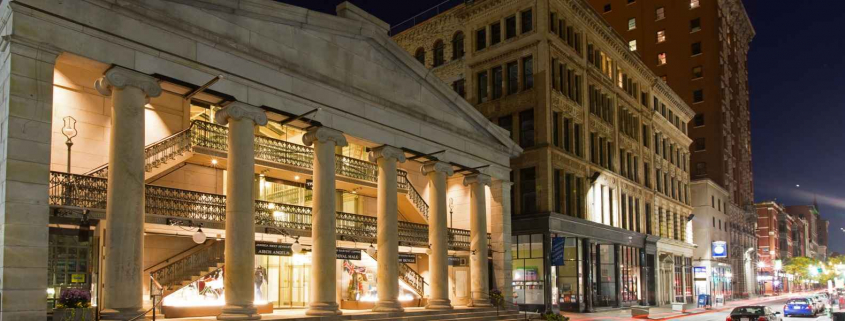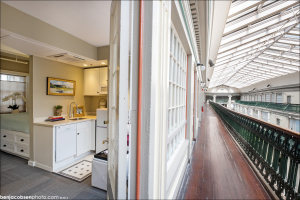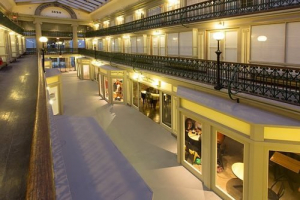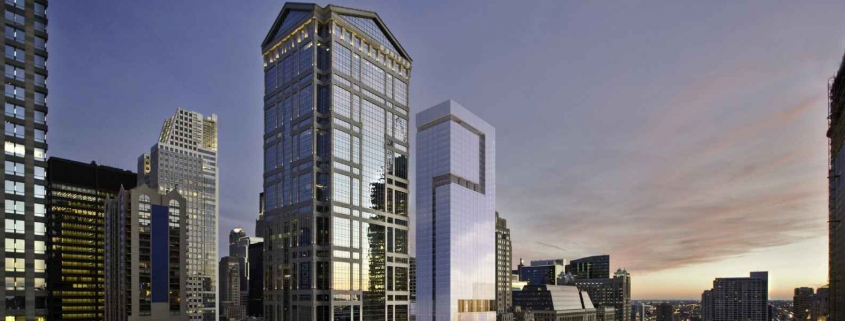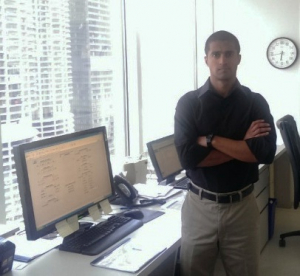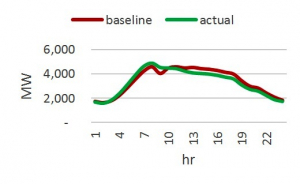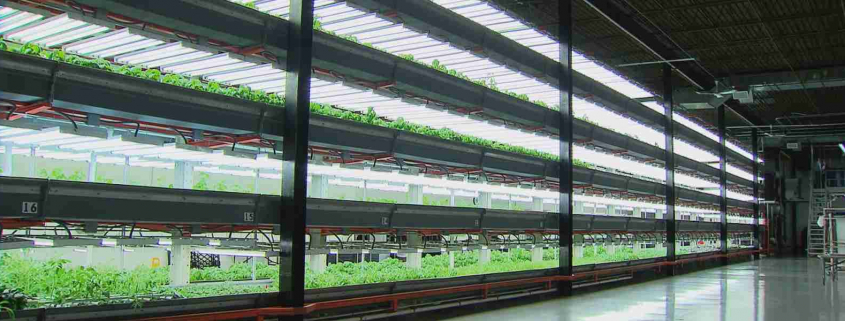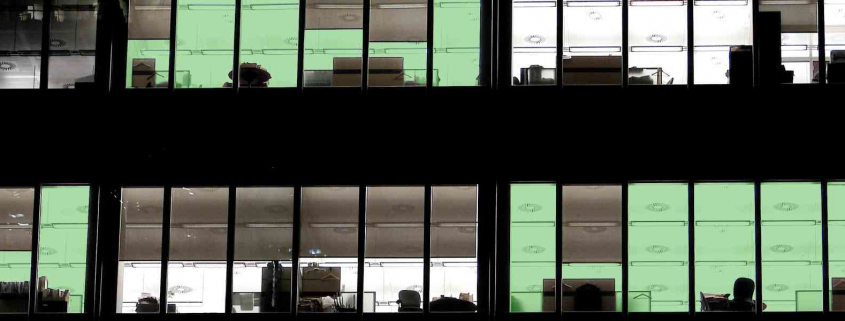In a 90,000-square-foot warehouse not far from Chicago’s Midway Airport, the future of urban farming has taken root. Welcome to the world of vertical farming.
Long shelves thick with fresh herbs and salad greens sit beneath hundreds of fluorescent grow lights. There are planters of basil, watercress and kale stacked in neat rows reaching the ceiling, afloat in a nutrient-rich stream of water fed by large blue tanks filled with tilapia. It’s an eerily beautiful scene, interrupted only by the occasional worker driving an aerial lift through the aisles, stopping to pluck handfuls of greens ready to be packaged and distributed throughout the city.
As the demand for fresh, locally grown food has increased among urban consumers, businesses like FarmedHere, which runs the Chicago warehouse, have stepped in to compete with conventional farms. Using advanced hydroponic and aquaponic methods, they’re growing fruits and vegetables year-round in facilities that are often in the same neighborhood as the restaurants and retailers they supply. Proponents like to call it ultra-local farming. “We can grow 200 percent more food per square foot than traditional agriculture, and without the use of chemical fertilizers,” said Mark Thomann, chief executive officer of FarmedHere.
The Association for Vertical Farming, an industry trade group, says vertical farms use 98 percent less water and 70 percent less fertilizer on average than outdoor farms. Weather fluctuations aren’t a factor, and neither is soil management. They can harvest crops as often as 20 times a year, and with their stack-it-high layout, occupy a fraction of the land traditional agriculture requires. So efficient is vertical farming that many believe it could move beyond a niche market and become a solution for food insecurity in the United States, which affects nearly 15 percent of households, according to the U.S. Department of Agriculture. Some believe it could even be the future of agriculture altogether, with climate change negatively affecting rural farmland while the global population continues to swell. By 2050, the World Health Organization estimates, there will be 9 billion people on Earth, with 70 percent of them residing in urban areas.
But before vertical farming can conquer the world, it has to prove it can scale up and be as environmentally sound as its backers claim. Of the many questions surrounding these ventures, the most important one may be whether it is a good business model to begin with. Thomann certainly believes so. In the two years FarmedHere has been in business, it has expanded distribution to dozens of supermarkets throughout Chicago, including all of the city’s Whole Foods locations. The company packages its own herbs and salad greens, which are certified organic, and can deliver to stores within 24 hours of the product being harvested.
FarmedHere’s foray into urban agriculture has been so successful, it’s planning to build vertical farms in other cities. “From an economic standpoint, I think we’re well down the pathway to showing that vertical farming can not only be a reality, but that it can be profitable,” Thomann said. From an environmental standpoint, FarmedHere has tremendous upside. In addition to growing food close to stores and without the use of chemical fertilizers and pesticides, the company conserves water — the most intensively used resource in conventional farming — through a closed-loop aquaponic system. The waste produced by the tilapia provides nutrients for the greens to absorb as they clean the water, which then flows back into the tanks.
Vertical farming also makes efficient use of urban spaces, occupying previously neglected warehouses, underutilized rooftops and other vacant areas. In New York, Gotham Greens grows everything from butterhead lettuce to bok choy in rooftop greenhouses, including a 20,000 square foot one atop a Whole Foods in Brooklyn. Green Spirit Farms in New Buffalo, Michigan, meanwhile, operates out of a former plastics molding factory. “Buildings like this are available throughout the United States,” said Milan Kluko, president of Green Spirit Farms. “Usually, they just need a power wash and a paint to get up and running again.”
Worldwide, vertical farm models range from rotating plant towers in Singapore to portable aquaponic crates in Germany. A former semiconductor factory in Japan is now a large-scale lettuce farm, growing 10,000 heads per day. In London, a company called Growing Underground went viral earlier this year after it revealed plans to build a hydroponic farm 100 feet under the city, in an abandoned World War II bomb shelter. “We wanted to build a vertical farm, but the financials of building in central London didn’t stack up,” said Steven Dring, co-founder of Growing Underground, which raised $1.4 million in seed funding and will open for business next year.
Originally conceived as skyscrapers filled with produce farms and livestock — an idea that quickly proved prohibitively expensive — vertical farming has come to encompass all sorts of green-tech operations in places as varied as parking garages, shopping malls and office buildings. There’s even a small aeroponic farm in Chicago’s O’Hare Airport.
But for all the novelty of indoor farming, there are hurdles that even the most eager start-ups struggle to clear. For starters, there’s the large upfront cost, typically in the millions of dollars, required to outfit a growing space. Recouping all that capital in the low-margin food industry can be a daunting task, and a reason many investors shy away. “A controlled environment like that requires a lot of technology that your typical outdoor field doesn’t have,” said J. Michael Gould, director of Texas A&M’s AgriLife Research and Extension Center in Dallas, which studies urban agriculture. “You get benefits from that technology, but right now the cost-benefit ratio is not particularly favorable.”
There’s also, for all vertical farming’s efficiencies, one very inefficient component: keeping all those lights on when the growing is done indoors. Without sunlight, plants require intense lighting for 16 to 18 hours a day, said Blake Davis, a vertical farming expert and professor at Illinois Institute of Technology. That adds up to sky-high energy bills. Improvements to indoor farming technology, including cheaper, more efficient lights, as well as monitoring equipment that measures and adjusts growing conditions, have brought down costs in the past few years, and further innovations are on the horizon.
A recent report from sustainable energy consulting firm Clean Edge noted companies like Philips are developing red- and blue-spectrum LED lights specifically for growing plants while others are testing sensors that detect optimal lighting levels for various crops. “Energy for lighting is one of vertical farming’s greatest expenses, making it a financial challenge if not carefully and properly designed,” the report stated. Gould, for one, thinks innovation will eventually bring down costs enough to make large-scale expansion a reality. There’s even room to make the plants themselves better, he said. “Every plant that’s grown indoors was originally developed and selected to grow outdoors,” Gould explained. “What needs to happen is the breeding programs need to begin to breed plants for indoor environments.”
Even with improvements, though, many vertical farms still draw energy from the grid, making them less of a green alternative than their ultra-local image suggests. There are also limits to the types of food that can be grown indoors. Staple crops like corn and wheat, for instance, are optimized for outdoor agriculture. “Urban agriculture will never be able to replace rural agriculture, though I think there are opportunities for them to work together,” said Danielle Nieremberg, president of Food Tank, a nonprofit organization focused on sustainable agriculture issues.
At Green Spirit Farms, Kluko, an engineer by trade, is constantly tinkering with lighting and other parts of his farming system. He currently uses grow lights that last 100,000 hours and are, he claims, as efficient as anything on the market. Still, he finds that in some cases technical innovations don’t match natural remedies. To control pests, he recently released 27,000 ladybugs inside the Michigan warehouse. “You really have to know what works best in these environments and use your resources wisely,” Kluko said.
Other operations are similarly trying to lessen their impact through natural as well as high-tech solutions. The Plant, a business incubator in a former meatpacking plant in Chicago, houses several start-up businesses, including a brewery, a kombucha maker, a bakery and three vertical farms. To cut down on waste, tenants utilize byproducts produced by other tenants. The kombucha maker produces CO2 that’s used in the vertical farms while leftover barley from the brewery feeds the fish used in one of the farm’s aquaponic growing systems.
The Plant is also in the process of installing an anaerobic digester, which will provide renewable energy for the entire operation by turning organic waste into methane gas. The price tag: $2 million, offset by a $1.5 million grant from the state of Illinois. “It’s basically like a big stomach,” said Davis, who is a board member with The Plant.
Finding renewable sources of energy is critical for vertical farms, Gould said. With climate change already causing extreme weather such as droughts, severe storms and flooding, “the last thing we want to do is pump more carbon dioxide into the air,” he said. A recent study in the journal Environmental Research Letters noted staple crops such as corn and wheat are seeing decreased yields as a result of climate change, with yield losses expected to as much as double from current levels by the year 2080.
But to survive and expand as a business, vertical farms may have to look beyond food sales alone to generate revenue. Davis said The Plant offers weekly tours along with classes like a “Do It Yourself Aquaponics Workshop.” Other companies offer consulting services or sell growing kits to hobbyist farmers. FarmedHere has received local producer grants from the USDA and from Whole Foods while Bright Farms, a New York vertical farming company, signs long-term contracts with supermarkets before it builds a facility.
Ben Greene said he thinks he has just the formula for adding value. Growing up on a small organic farm in North Carolina, he experienced the joys, as well as the frustrations, of food farming. After serving as a combat engineer in Iraq for several years, he returned to his home state and is currently raising money for a hybrid business that will combine farm and supermarket under one roof. The Farmery will grow fruits and vegetables in a second-story hydroponic farm, then cart them downstairs to be sold in the grocery store.
Greene said produce grown on-site will comprise 15 percent of The Farmery’s retail sales while locally sourced products, including meat, beer and grocery items, will make up the rest. There will be a café on the first floor, he said, as well as a growing wall filled with herbs. If a customer wants to add a sprig of mint to her tea, she can pluck it right off the wall. “It’s designed to have the high margins of a restaurant with the high foot traffic of a grocery store and the unique experience of being able to see where your food is grown,” Greene said.
And even though construction has not yet begun — that is expected to happen in December, near Raleigh-Durham — he envisions The Farmery as a successful model for cities across the country. Aside from food sales, he said the space will rely on savings coming from reduced inventory loss. In researching his business model, Greene said he discovered that as much as a third of fresh inventory is spoiled or damaged on the way from the farm to the grocery store. “That’s where we see a big opportunity, is bringing that number down to next to nothing,” he said.
Less food waste, fresher product, year-round availability — these are some of the advantages vertical farming offers. And while the industry has numerous kinks to work out, many experts believe it will adapt out of necessity.
At the extension center in Dallas, Gould and his team are studying ways to tailor low-cost, high-volume vertical farms to inner-city neighborhoods. All of the growth and technology currently resides in the niche markets — the FarmedHeres and Green Spirit Farms that supply to retailers serving mostly affluent customers. But he hopes eventually to see models scale up and become economically feasible for consumers of all income levels. “We’re going to have 7 billion people living in cities in the next few decades, and there isn’t enough countryside to grow all the food we’re going to need to keep people fed,” Gould said. “Agriculture today is pretty much a two dimensional operation. We need to figure out how to do it in the third dimension.”
Source: International Business Times

